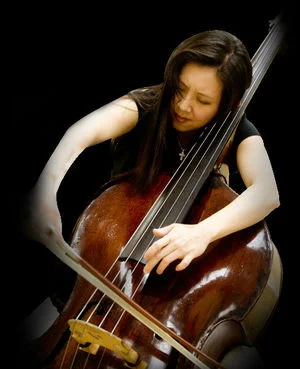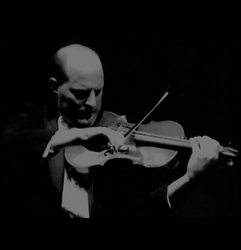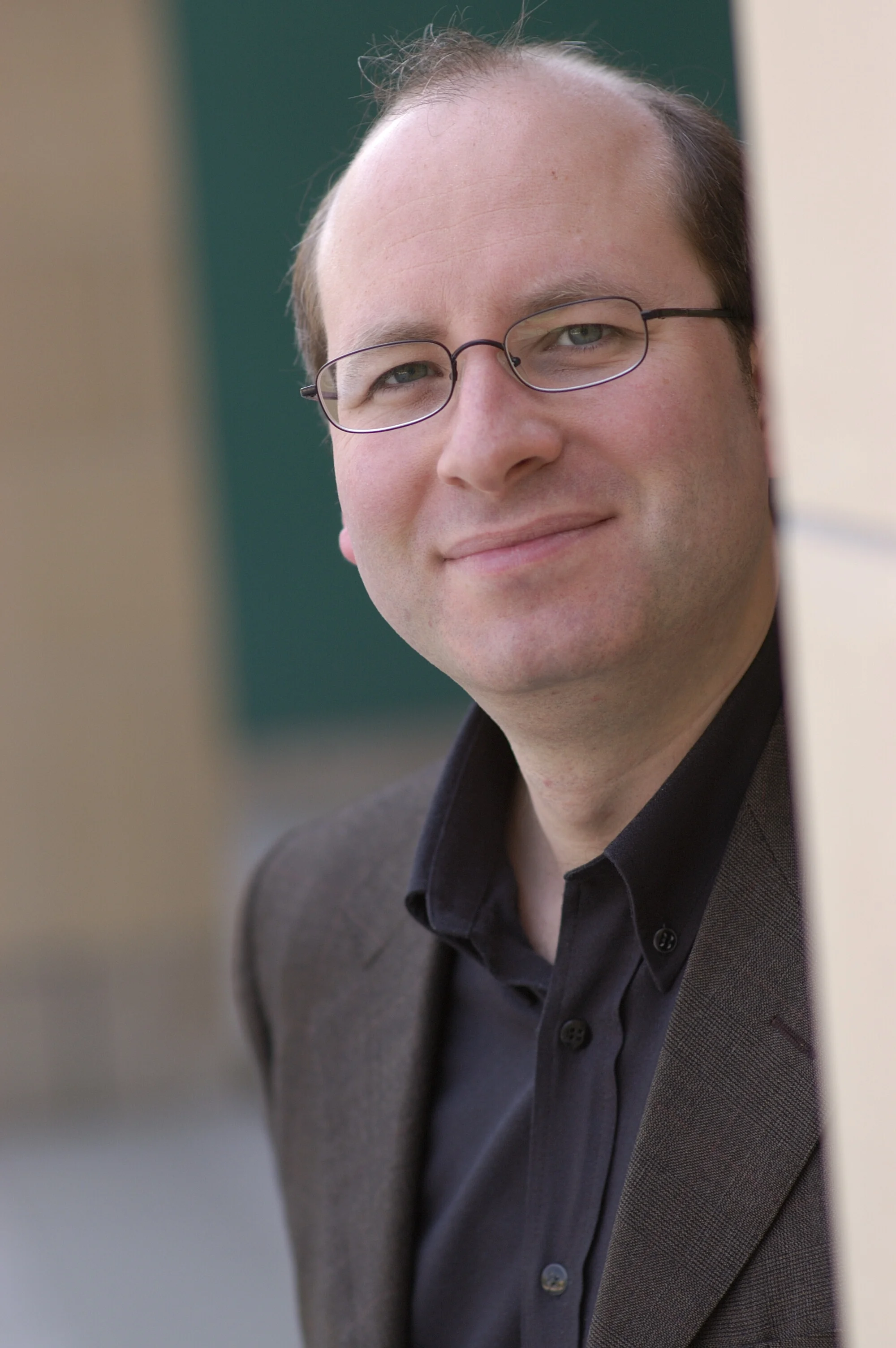Song Without Words (for contrabass and piano) (2018)
cb, pno
8:00
Song Without Words (originally Movement 2 from Sonata for Viola and Piano) is a plaintive, lyrical song which builds to a dramatic conclusion.
Song Without Words (for violin and piano) (2018)
vla, pno
8:00
Song Without Words (originally Movement 2 from Sonata for Viola and Piano) is a plaintive, lyrical song which builds to a dramatic conclusion.
Song Without Words (for violoncello and piano) (2018)
vc, pno
8:00
Song Without Words (originally Movement 2 from Sonata for Viola and Piano) is a plaintive, lyrical song which builds to a dramatic conclusion.
Song Without Words (for clarinet and piano) (2018)
cl, pno
8:00
Song Without Words (originally Movement 2 from Sonata for Viola and Piano) is a plaintive, lyrical song which builds to a dramatic conclusion.
Song Without Words (for viola and piano) (2018)
vla, pno
8:00
Song Without Words (originally Movement 2 from Sonata for Viola and Piano) is a plaintive, lyrical song which builds to a dramatic conclusion.
Premiere
Amihai Grosz, viola
Amy Sze, piano
HKUST Music Alive!
CMA Lecture Theatre, The Hong Kong University of Science and Technology
HONG KONG
November 9, 2017
Towards the Wall (2014)
cb,pn
4:00
Towards the Wall is about reaching for a unobtainable goal. In successive attempts the contrabass and piano spin out every-climbing riffs which reach higher and higher, answered by pulsating chords set against passionate, high lyrical lines in the contrabass.
Towards the Wall was commissioned by Yung-chiao Wei and premiered March 24, 2015 at the University of North Texas by Yung-chiao Wei and Chaoi Chou.
Premiere
Yung-chiao Wei, contrabass
Chao-i Chou, piano
University of North Texas
Denton, TX
USA
March 24, 2015

Winter/Spring (2014, rev. 2017)
1. Winter Visions
2. Spring Rounds
cb qut
8:00
Winter/Spring explores the emotional and physical landscapes associated with the seasons. Winter Visions is a short meditation on an imagined winter landscape. Spring Rounds begins in the depths of the contrabass quartet with building chords out of which emerge a wailing melody. Pitches from the building chords return as rapid, ferocious walking basslines which alternate between members of the ensemble, building to a frenzied climax.
Winter/Spring was commissioned by the 2014 Louisiana Bass Fest at Louisiana State University and premiered February 9, 2014.
Premiere
2014 Louisiana Bass Fest Bass Quartet
Yun-chieh Chou, John Madere, Brian Powell, Yung-chiao Wei
Louisiana Bass Fest
Louisiana State University
Baton Rouge, LA
USA
February 9, 2014
Crescent Moon, Let Me Love You (2013)
cl;mar
5:00
Crescent Moon, Let Me Love You is inspired by "Love Song of Kangding," a folksong from the Sichuan province of China. Evoking landscapes of the crescent moon and clouded skies, which come to symbolize the lovers themselves, the clarinet and marimba personify these images in a series of variations on the folk tune.
Crescent Moon, Let Me Love You was premiered by Richard Stoltzman, clarinet, and Mika Stoltzman, marimba, on Nov. 5, 2013 at the Tsang Shiu Tim Art Hall of The Hong Kong University of Science and Technology (HKUST), celebrating Bright Sheng on his being awarded an Honorary Doctorate from HKUST.
Premiere
Richard Stoltzman, clarinet
Mika Stoltzman, marimba
HKUST Music Alive!
Tsang Shiu Tim Art Hall
The Hong Kong University of Science and Technology
November 5, 2013
Richard and Mika Stoltzman
Rockport Music Festival
mountains...seas...buildings...trees (2012, rev. 2015)
vc;mar
7:30
The title of this work comes from a travel guide describing the physical landscape of Hong Kong. As the violoncello and marimba convey images of majestic mountains and frantic urban spaces, to peaceful and haunting visions of greenery and the open sea, the work gradually evolves into an exploration of an emotional landscape.
mountains...seas...buildings...trees... was written for the 2012 season of The Intimacy of Creativity - The Bright Sheng Partnership: Composers Meet Performers in Hong Kong where it was premiered by Trey Lee, violoncello, and Ji Hye Jung, marimba, at the May 1, 2012 World Premiere Concert at the Hong Kong City Hall Theatre.
Premiere
May 1, 2012
Trey Lee, violoncello
Ji Hye Jung, marimba
The Intimacy of Creativity 2012
Hong Kong City Hall Theatre
HONG KONG
Awaken This Feeling (2011)
solo vln; strg trio; pno
8:00
"How can comsic religious feeling be communicated from one person to another, if it can give rise to no definite notion of a God and no theology? In my view, it is the most important fucntion of art and science to awaken this feeling and keep it alive in those who are receptive to it."
- Albert Einstein
The title Awaken This Feeling comes from this quote from Albert Einstein about the role of art and science to inspire a sense of cosmic order in the world. The work begins with slowly descending, dream-like scales performed by the string trio and piano, representing Einstein's thoughts. Out of these scales, emerge Bach-like arpeggiations from the solo violin, representing Einstein's desire to awaken a sense of cosmic order. As the solo violin spins longer and longer patterns, the supporting ensemble continues to echo the opening descending scales, until the motive returns more amplified to close the first section of the piece. The solo violinist then takes up the descending scalar motive, winding it into a long, aching melody accompanied by drones in the string trio and echoes of the Bach-like figurations in the piano. After reaching its climax, the piece begins again with the Bach figurations, this time driving to a conclusion of spiritual affirmation.
Awaken This Feeling (for solo violin, string trio, and piano) was premiered by pianist Ming-Hsiu Yen and the Daedalus Quartet with Ara Gregorian, solo violin; Min-Young Kim, violin; Jessica Thompson, viola; and Raman Ramakrishnan, cello on May 8, 2011 at the Concert Hall of the Hong Kong Academy for Performing Arts.
The work was written as part of the Einstein in Hong Kong exhibition, celebrating sixty years of diplomatic relations between Switzerland and China and originally commissioned by the Connections Chamber Music Series for an earlier version for string quartet and vibraphone.
Premiere
Ming-Hsiu Yen, piano
Daedalus Quartet
Ara Gregorian, solo violin; Min-Young Kim, violin; Jessica Thompson, viola; Raman Ramakrishnan, cello
Concert Hall, Hong Kong Academy for Performing Arts
HONG KONG
May 8, 2011
Awaken This Feeling
Per Non Dimenticare (2010)
1. La Furesta
2. Fimmene Fimmene
3. Pizzecu
4. Luna Otrantina
5. Tarantella Frigia
(movements performed without pause)
piano quintet
10:00
Per Non Dimenticare (trans. "So We Don't Forget") is inspired by family members from the Puglia region of Italy and based on five folksongs from that region. Known for its nasal, rustic singing style, the songs were historically sung to expel the effects of spider venom. But, in recent times, dancing to these songs has symbolized a way of working out psychological issues, a way of cleansing one's soul. Per Non Dimenticare is about putting one's past in perspective and understanding, ultimately, the connection between personal identity and family history and roots.
Per Non Dimenticare was commissioned by the Connections Chamber Music Series and funded in part by the Composer Assistance Program of theAmerican Music Center.
Premiere
Lara Urrutia, piano
California Quartet
Bridget Dolkas, violin; Jeanne Skrocki, violin; Pam Jacobson, viola; Lars Hoefs, cello
Encinitas Library
Encinitas, CA
USA
May 23, 2010
Dreams of Orpheus (2008)
cl, vn, vc, pn
10:00
Dreams of Orpheus is an impressionistic re-telling of the Orpheus myth. The work is built from the transformation of three musical ideas, each representing different elements of Orpheus' character. A rock-influenced repeating chord idea, played by the piano, represents Orpheus strumming his lyre. Pizzicato scales in the strings represent Orpheus' thoughts, and an angular melody played by the clarinet represents his intoxicating song. The first slow, lyrical section of the piece sets a pastoral scene in slow motion, interrupted by the kidnapping of Euridice and Orpheus' descent into the underworld. In the second section, Orpheus and Euridice's ascent out of the underworld is depicted through a series of faster and faster variations on the angular clarinet theme, which climaxes at the tragic moment when Orpheus looks upon Euridice, sending her back to the underworld. The work ends with a warped repetition of the last strains of Orpheus' song accompanied by fractured versions of the other motives as he reflects on his tragic story.
Dreams of Orpheus was Commissioned by Music in the Loft for Antares and funded in part by the Composer Assistance Program of the American Music Center.
Premiere
November 22, 2008
Antares
Garrick Zoeter, clarinet; Jesse Mills, violin; Rebecca Patterson, cello; Eric Huebner, piano
Tell Me... (1998, rev. 2007)
string quartet
13:00
Tell Me... (originally titled String Quartet No. 1) is structured like the work of a confused storyteller, mixing strands of multiple stories. The piece opens with the juxtaposition of intense, frenzied music and the slow, pulsating chords of a dirge. Motives from both these themes are used in a wild dance, which interrupts the opening section, followed by a mournful song. The dance motives return in an accelerating section, leading to the passionate climax of the pulsating dirge theme to the end the piece.
Premiere of revised version
Parker Quartet
Daniel Chong, violin; Karen Kim, violin; Jessica Bodner, viola; Kee-Hyun Kim, cello
Music in the Loft
Chicago, IL
USA
September 20, 2008
The Procession (2006)
1. The Fiddler and the Bells
2. In Memoriam I: Blurred Visions
3. In Memoriam II: Alone in the Hills
4. The Return
pno, vln
15:00
This work is based on my reflections after attending a Corpus Cristi procession at the Mission San Antonio de Pala in San Diego county. The service began with an outdoor mass, accompanied by the tolling bell of the mission, followed by a procession, accompanied by a fiddle player. We wound through the surrounding neighborhood, stopping at "tribute posts" where members of the parish had collected photographs and memorabilia of family members who had recently passed away. The tributes to the dead and the collision of religious and folk cultures lead me to reflect on universal themes of faith and spirituality.
The Procession opens with impressions of the fiddle player and tolling church bells. Repeating bell motives transform into phrases of a hymn played out of time against fiddle patterns in the violin. The middle two movements serve as musical "tribute posts" based on material from the opening movement. In the second movement, the tolling bells return blurred and out of sync, separated by romantic cadenzas in the violin and piano. The third movement shifts from unsettled introspection to poignant lyricism, beginning with a distorted version of the hymn tune from the first movement. In the final movement, the procession comes to an end with the return to the mission. The violin plays fiddle patterns set against chords in the piano that are serene at first and quickly become rhythmically intensified. The hymn theme returns, this time in tempo with the violin, leading to a climax of spiritual affirmation.
The Procession was commissioned by Martha Walvoord.
Premiere
Martha Walvoord, violin
Nicholas Hutchinson, piano
Hope College, Holland, MI
USA
Jan. 14, 2007
Passage (2006)
1. Introduction
2. Trio (The Desert Crossers)
3. Transition into Duet
4. Duet
5. Finale
(movements performed without pause)
vln, pno
13:00
Passage is based on photographic images and documented experiences of US/Mexico border crossers. The title refers to both the physical journey immigrants attempt to make across the border as well as the spiritual rite of passage many Latin-Americans associate with the border crossing. The score opens with a "grito," or wail, from the violin which is answered by an original hymn tune in pounding chords from the piano. This hymn theme returns in varied forms throughout the piece as a refrain separated by episodes which portray the action of the narrative. The first episode, "The Desert Crossers," is in the form of a warped Mexican folk tune, portraying the border crossers' fear and trepidation surrounding the physical and spiritual journey. The second episode, "Duet," is an introverted lyrical section, which contrasts documented experiences of border crossers' desperation while trying to cross the surrounding desert and accounts of tranquil "hallucinations" of falling water. In the "Finale" the hymn tune returns for the last time, played softly by the violin. This builds to a majestic climax along with the return of the wailing violin theme. As the journey comes to a close, the piano's hymn chords and the violin's somber wailing fade away, portraying both the experience of those who make it across the border and those who do not.
Passage was commissioned by Milwaukee Ballet.
Premiere
Pasquale Laurino, violin; Andrews Sill, piano
Pabst Theater, Milwaukee
USA
March 23, 2006
Fiddle States (2005)
1. Breathing
2. Chasing
3. Dreaming
4. Dancing
violin duet
ca. 8:00
Fiddle States borrows from the rich tradition of American Appalachian and Bluegrass fiddling. Based partly on fiddle material, this piece plays with the many characteristics of fiddle tunes from driving rhythmic pulsation to introspective lyricism. The opening movement depicts the act of breathing using the idiomatic droning found in fiddle tunes. The second movement is a turbulent chase between the two violinists. The third movement is an introspective nocturne. In the final movement, a short set of variations on a Bluegrass tune gradually spin out longer and longer melodic patterns, building to a climax to conclude the work.
Fiddle States was commissioned by Martha Walvoord.
Premiere
Martha and Jennifer Walvoord, violins
MacIntosh Theatre, University of Michigan, Ann Arbor
April 15, 2005
Fiddle States, Connections Chamber Music Series
Sonata (2000, rev. 2018)
1. q = ca. 88; with intensity
2. q = ca. 72; calm
vla, pno
13:00
This piece grew out of four note melodic and harmonic structures, creating sharply contrasting materials. Throughout the first movement, the violist and pianist rarely imitate one another. Rather, they react to one another's musical gestures. It isn't until the second half of the second movement, after a restatement of themes from the first movement, that the violist and pianist reconcile, engaging each other in an imitative dialogue.
Premiere
Evan N. Wilson, viola
Walter Ponce, piano
Jan Popper Theatre, UCLA
Los Angeles
May 18, 2000
Premiere (2017 version)
Diemut Poppen, viola
Oliver Triendl, piano
Intimacy of Creativity 2017 Instrumental Chamber Music Festival
Hong Kong
April 23, 2017



































































































